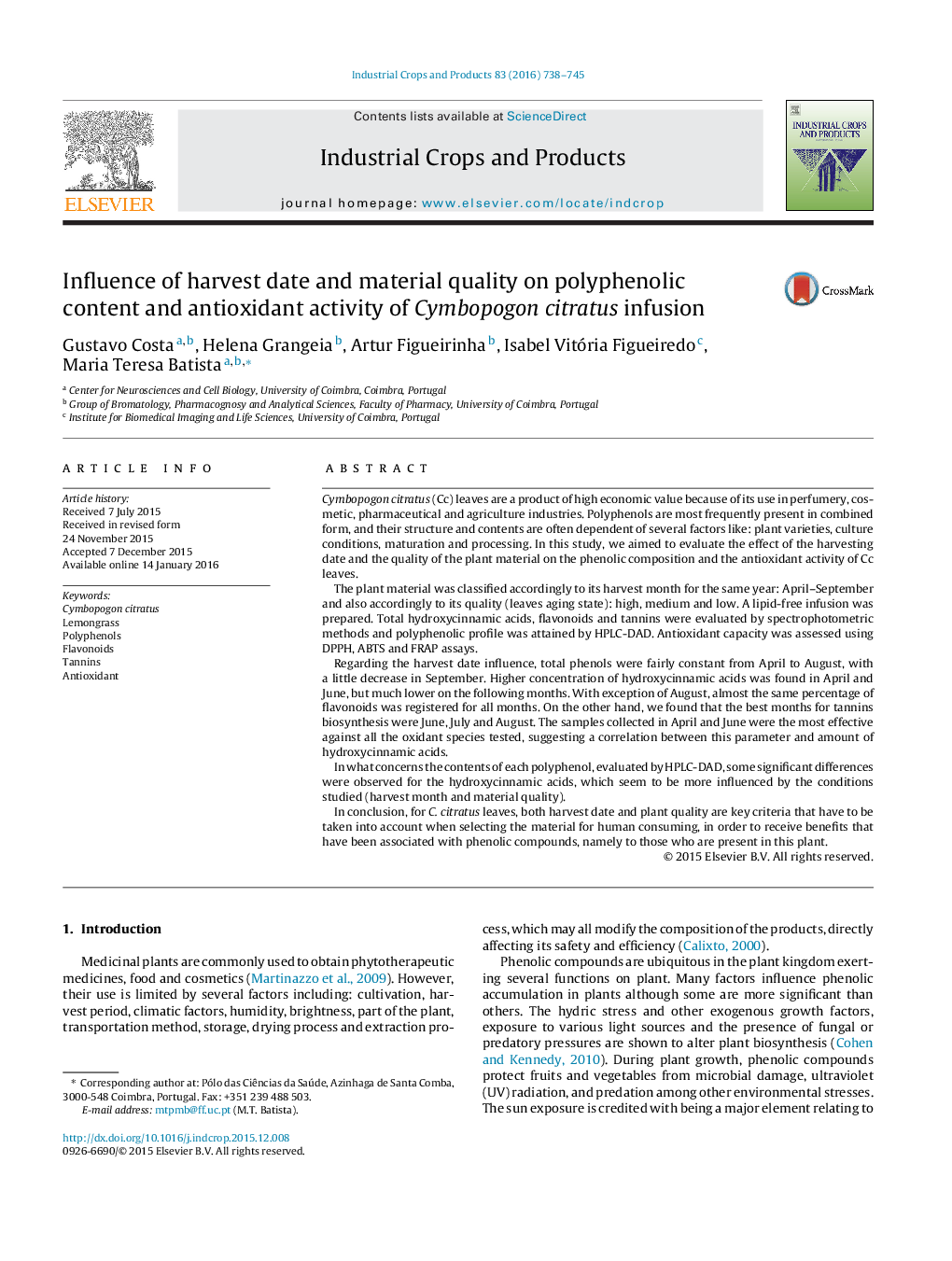| Article ID | Journal | Published Year | Pages | File Type |
|---|---|---|---|---|
| 4512323 | Industrial Crops and Products | 2016 | 8 Pages |
•Polyphenolic content and antioxidant capacity are related to harvest date and strongly related to plant quality.•Harvest date and plant quality are crucial to select the material for medicinal uses.•Harvest date and plant quality determine its different industrial applications.
Cymbopogon citratus (Cc) leaves are a product of high economic value because of its use in perfumery, cosmetic, pharmaceutical and agriculture industries. Polyphenols are most frequently present in combined form, and their structure and contents are often dependent of several factors like: plant varieties, culture conditions, maturation and processing. In this study, we aimed to evaluate the effect of the harvesting date and the quality of the plant material on the phenolic composition and the antioxidant activity of Cc leaves.The plant material was classified accordingly to its harvest month for the same year: April–September and also accordingly to its quality (leaves aging state): high, medium and low. A lipid-free infusion was prepared. Total hydroxycinnamic acids, flavonoids and tannins were evaluated by spectrophotometric methods and polyphenolic profile was attained by HPLC-DAD. Antioxidant capacity was assessed using DPPH, ABTS and FRAP assays.Regarding the harvest date influence, total phenols were fairly constant from April to August, with a little decrease in September. Higher concentration of hydroxycinnamic acids was found in April and June, but much lower on the following months. With exception of August, almost the same percentage of flavonoids was registered for all months. On the other hand, we found that the best months for tannins biosynthesis were June, July and August. The samples collected in April and June were the most effective against all the oxidant species tested, suggesting a correlation between this parameter and amount of hydroxycinnamic acids.In what concerns the contents of each polyphenol, evaluated by HPLC-DAD, some significant differences were observed for the hydroxycinnamic acids, which seem to be more influenced by the conditions studied (harvest month and material quality).In conclusion, for C. citratus leaves, both harvest date and plant quality are key criteria that have to be taken into account when selecting the material for human consuming, in order to receive benefits that have been associated with phenolic compounds, namely to those who are present in this plant.
